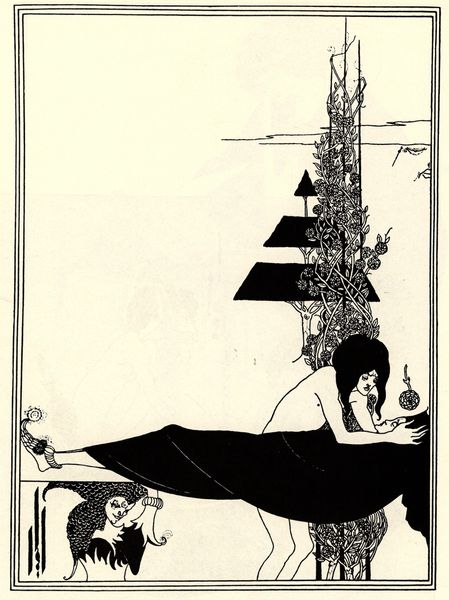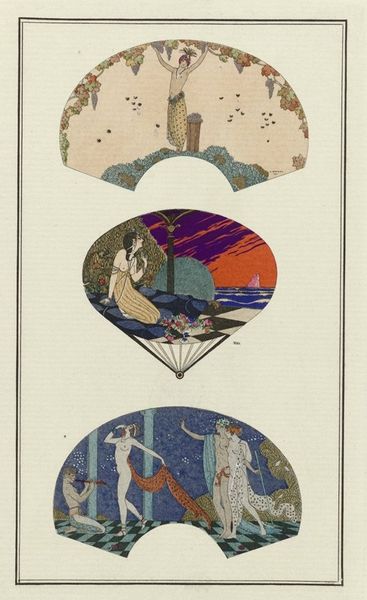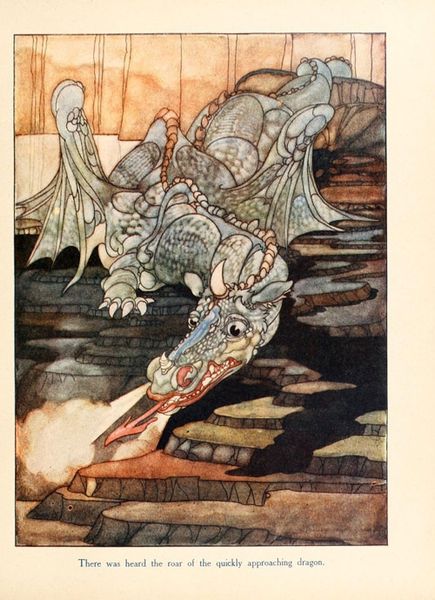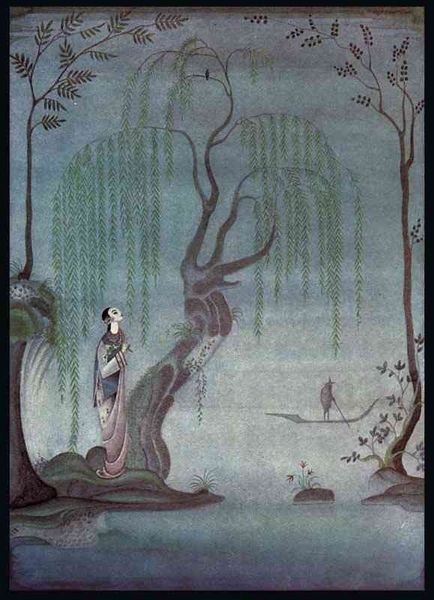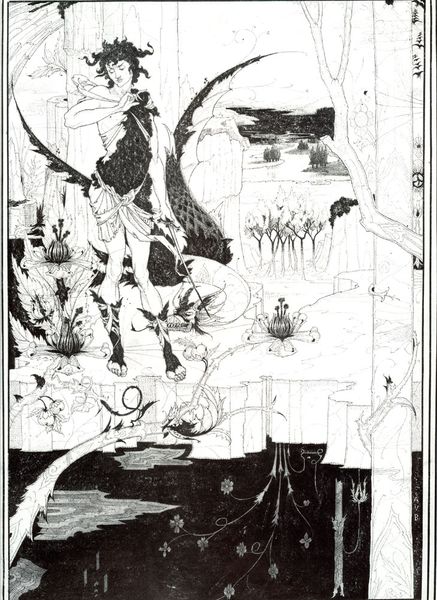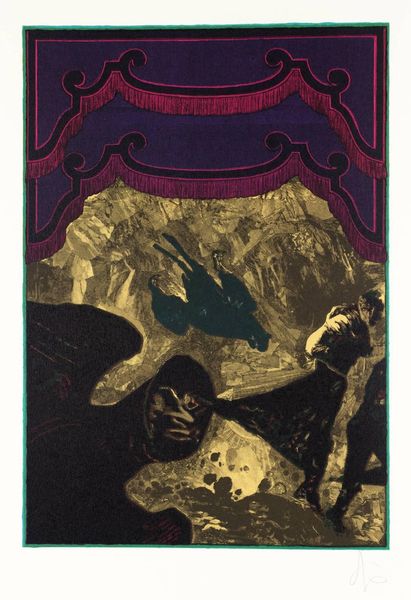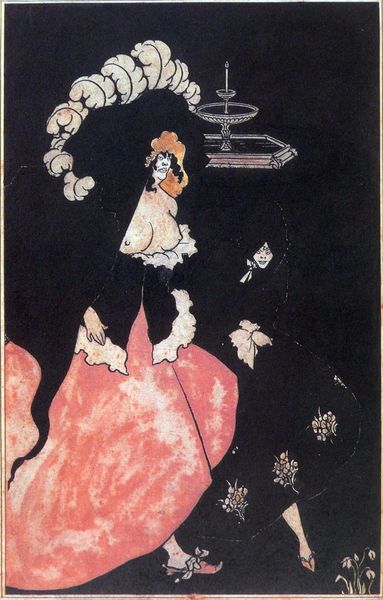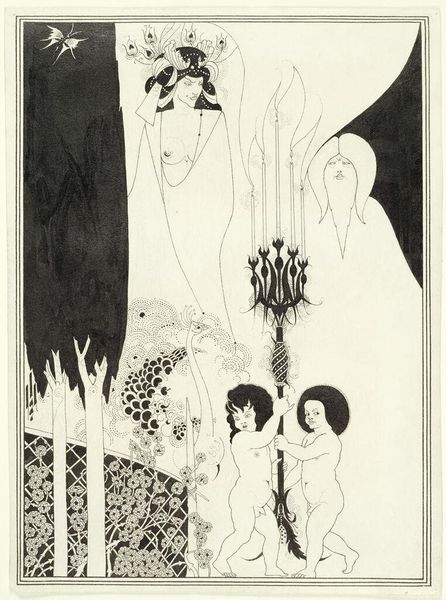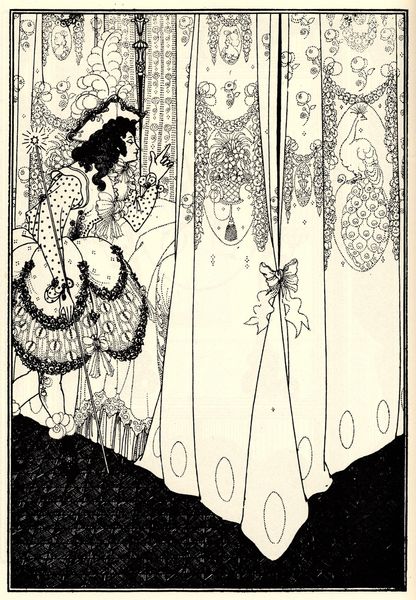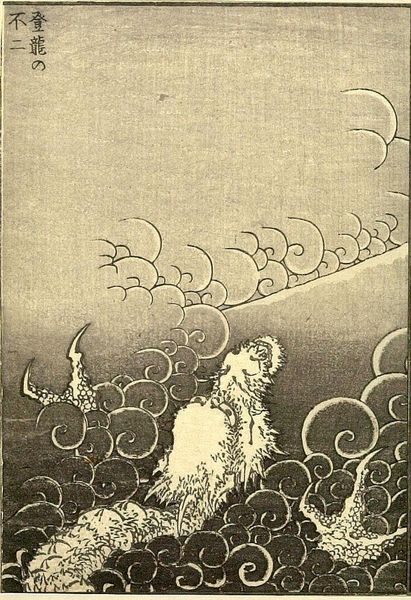
drawing, print, paper, watercolor, ink
#
portrait
#
drawing
#
art-nouveau
#
narrative-art
# print
#
figuration
#
paper
#
watercolor
#
ink
#
symbolism
Copyright: Public domain US
Curator: This is the cover of the Revista Contemporânea, designed by José de Almada-Negreiros in 1915. It's rendered in ink and watercolor on paper, and showcases an intriguing blend of Art Nouveau and Symbolist styles. Editor: It's like a half-remembered dream. There’s a languid feeling to it, a sense of being suspended in time, like the scene in a play that hasn’t started yet. I feel as if something profound is about to occur, but it never does. Curator: Considering the historical context, the materials themselves provide a key to understanding. The availability of mass-produced paper and inks broadened access to artistic expression and distribution via periodicals, which democratized art and literature, reaching a wider audience and facilitating the circulation of new ideas during a time of social change and cultural transformation. Editor: You know, the slightly faded quality almost makes it look like an antique photograph, something fragile you might find tucked away in an old album. The sketchy quality gives an immediate sensation, as if the artist were attempting to catch the fleeting essence of the modern world—perhaps with an attempt to mock. Curator: Note the contrasting depiction of genders—how the woman's attire dominates visually, almost dwarfing the bent figure of the man—might reflect emerging debates around shifting gender roles. Considering how Almada Negreiros lived, this depiction, I think, is more related to the Futurist esthetic of a new sensibility. Editor: I see her umbrella is like a strange halo, that seems like the sun itself… the world, even? His droop mirrors his apparent impotence towards this goddess… Curator: Interesting that you noticed that. The symbolic weight placed on this imagery served not only as an aesthetic flourish but engaged the socioeconomic dimensions as the artist pushed against the traditional hierarchies prevalent at the time, challenging established norms, and reflecting shifting cultural landscapes of early 20th century Portugal. Editor: Ultimately, this work shows to me, at its essence, a question: who's indebted to whom? The bent posture says so much. Curator: Examining this 1915 cover in terms of labor and artistic agency, we appreciate the intersections between art, commerce, and evolving societal norms, offering rich insights into the world from which it emerged. Editor: Yes, definitely a statement of its era and, for me, very much so: how art shapes our past and influences the present.
Comments
No comments
Be the first to comment and join the conversation on the ultimate creative platform.
